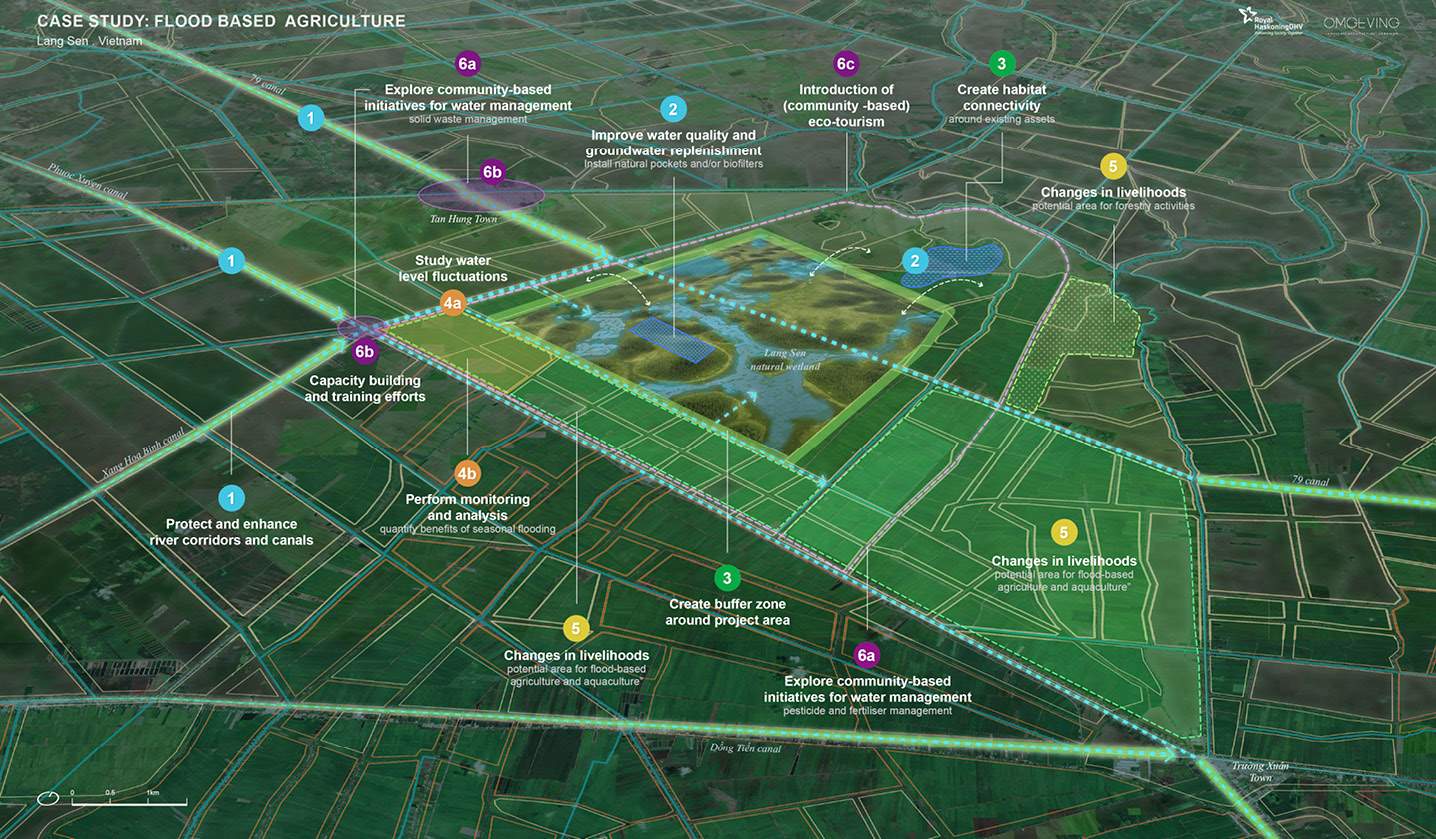Potential NbS measures
Upscaling flood-based agriculture systems and natural floodplain protection is proposed as a Nature-based solution for this region. This aims to achieve the following goals:
-
Improved farmer incomes over a longer period of time
-
Restore biodiversity
-
Sustainable delta management
To achieve these goals, the fields must be inundated for a sufficiently long period during the flood season. Therefore, the flood levels need to be high enough to overtop the dikes, culverts, or sluice gates, which need to be installed to inundate the area within dike rings. permitting fields to floods brings the following benefits:
-
Replenishment of the groundwater.
-
Long-term inundation can act as a natural pesticide, flushing out pollutants like residual pesticides and alum in the field.
-
Transport of fine sediments into the fields for re-fertilization, especially during the first floods as those contain a relatively high amount of sediment.
-
Free passage for fish to move into and out of the inundated fields, providing more breeding places for some aquatic species.
-
To maintain the growth of a delta, it is important for enough sediment to be deposited in the floodplains. Over time, the increase in land level due to sedimentation should be greater than the combined effects of sea level rise and land subsidence. This is essential for the ongoing processes of delta growth.
Therefore, the main structural measures related to this case include installing culverts or sluice gates to allow water in periodically and protecting and enhancing river corridors and canals leading to the designated areas (1 in the figure above). These measures could be further improved with non-structural measures, such as creating a buffer zone around the natural wetland (3) and establishing habitat connectivity around existing natural assets (3). The changes in land use also require a change in livelihoods, with agricultural activities transitioning from three-season rice to two-season rice with prawn (giant freshwater prawn)/natural fishing or a combination of rice with floating rice/vegetables, upland crop, aquaculture/fishing (5). Additionally, eco-tourism can be developed in the area (6c). Additional community-based activities include initiatives for water management (reducing pesticides and fertilizers) (6a) and training to increase capacity to implement flood-based agriculture (6b). As the project is still in a pilot phase, it is recommended to conduct monitoring and evaluation (4).
